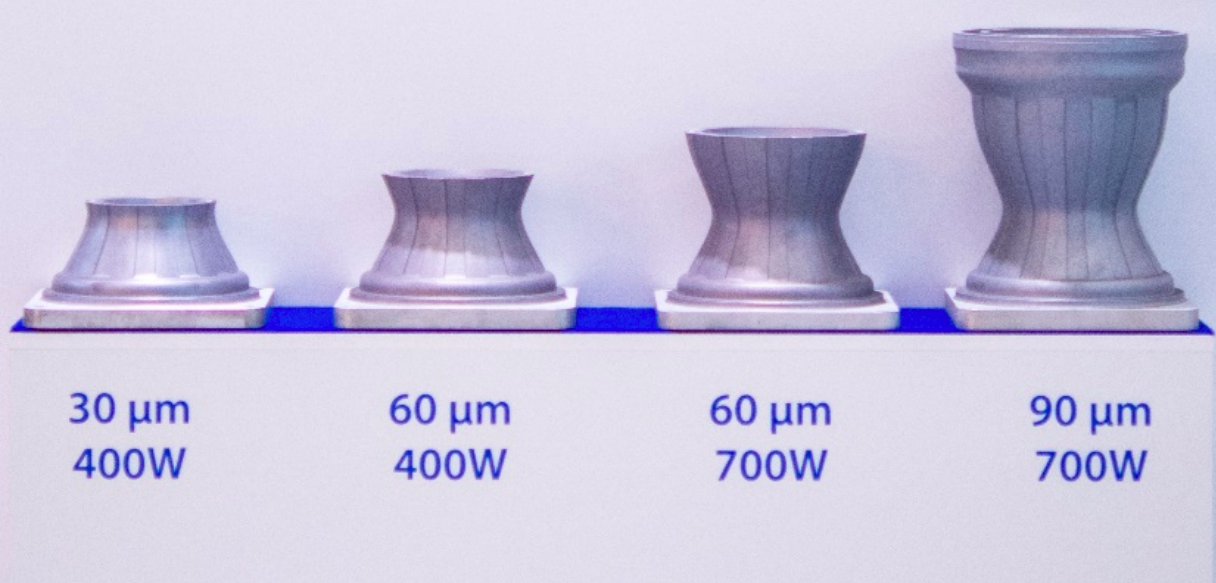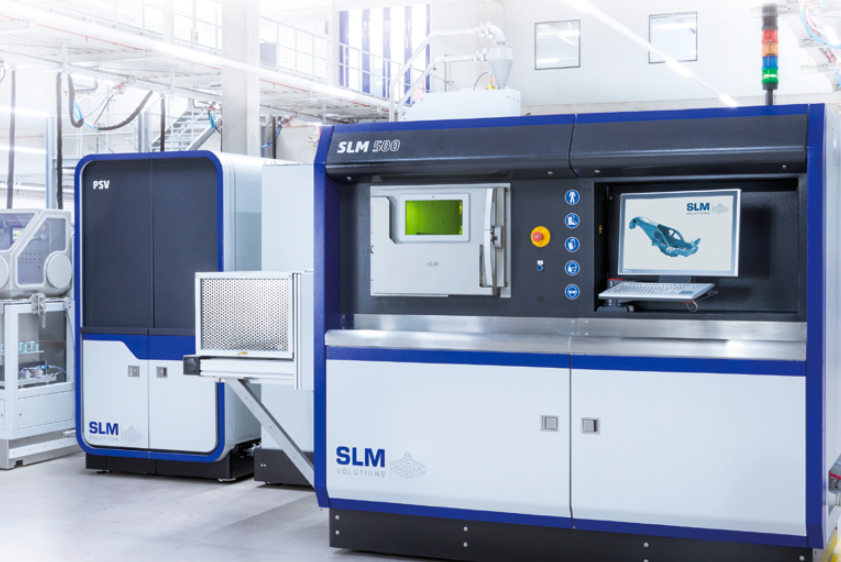German metal 3D printer manufacturer SLM Solutions has worked with the aerospace division of multinational manufacturing conglomerate Honeywell, to produce a parameter set for 3D printing aluminum F357.
Developed as part of the companies’ ongoing partnership, the material reportedly provides 3D printed parts with considerably improved properties compared to those created through die-casting methods. In addition, the advanced additive metal could also address both partners’ wider goals of reducing manufacturing times and costs, and 3D printing aircraft components that meet industry standards.
“The open architecture system of the SLM machine provides huge advantages like high flexibility, and parameter sets can be customized,” said Dr. Sören Wiener, Senior Director of Technology and Advanced Operations at Honeywell Aerospace. “With this open access strategy and the great support of SLM Solutions, we step forward to achieving our next goals.”

SLM and Honeywell’s 3D printing partnership
Based in Luebeck, Germany, SLM Solutions is a specialist in developing and providing Selective Laser Melting (SLM) 3D printers. The SLM 800 metal additive system was revealed at Formnext 2017, and features a quad-laser configuration with four 400 W or 700 W lasers, and a large build envelope measuring 500 x 280 x 850 mm.
The company’s additive manufacturing technology has been utilized within a range of applications, including in the production of “the world’s largest 3D printed rocket engine” for British aerospace firm Orbex. This was followed by collaborations with Italian service bureau BEAMIT, which saw the companies develop new printing settings for SLM printers, and cycling supplier CeramicSpeed, where it 3D printed pulley wheels for professional cyclists.
Nonetheless, neither of the company’s existing partnerships yielded impressive financial results for SLM Solutions, and it announced a 38.3 percent decline in sales last year. Since then, SLM has begun working with Honeywell to qualify new additive manufacturing parameters, to enable 3D printing at increased thicknesses, and its fortunes have changed. Now, not only has the company revealed record financial results for the first quarter and will likely be hoping that its collaboration with Honeywell, could lead to new applications of its metal 3D printing technology.

The aerospace applications of aluminum F357
In the early stages of their collaborative work in December last year, Honeywell began attempting to qualify aluminum builds using its quad-laser SLM 500 3D printer. Working with the aluminum alloy F357, a new beryllium free version of AlSi7Mg0,6 (A357), the company experimented with increasing the layer thicknesses of parts to 60 and 90 µm respectively.
SLM Solutions initially provided generic aluminum parameter sets for Honeywell to complete material qualification and achieve optimal material properties, but now development has reached an “important milestone.” Using a new set of printing settings, the companies have 3D printed components that display “significantly increased” mechanical properties in comparison to those exhibited by conventional diecast parts.
Moreover, such robust, high-strength parts are now able to meet the required standard for enabling widespread aerospace adoption. As a result, F357 aluminum is highly sought after within the industry and it provides desirable mechanical properties too, such as enhanced corrosion resistance, and high-strength across a wide temperature range. The alloy also reportedly offers great weldability, and excellent suitability for post-processing, like mechanical machining or within electrochemical processes such as anodizing.
These characteristics lend themselves to creating thin, complex structures for applications in both the aerospace and automotive industries. As a result, the newly-developed printing parameters represent a landmark achievement in the companies’ ongoing partnership.
“It is a privilege to work together with one of the leading companies in the aerospace world, concluded Benjamin Haas, Product Manager for Materials & Parameters at SLM Solutions. “This way, we can learn a lot from each other leading to perfectly suited, industry proven solutions from which all of our customers can benefit.”
Aluminum materials in the 3D printing industry
Aluminum alloys are commonly used for manufacturing automotive and aerospace components, but they have been used to produce a range of end-use parts, ranging from sports equipment to dashboard panels. More recently, 3D printing companies have sought to develop metals with enhanced mechanical performance, in order to expand on these applications and create parts with improved qualities.
Metal additive manufacturing specialist Amaero has entered the final phase of gaining international patent approval for its Amaero HOT Al aluminum alloy. The newly-developed metal has high scandium content and can be heat treated and age hardened after 3D printing, giving it a boost to strength and durability.
Materials manufacturer QuesTek Innovations LLC meanwhile, is developing a new 3D printer feedstock in collaboration with the German Aerospace Center (DLR). An aluminum alloy, the new material from the two companies, will exhibit high strength at elevated temperatures between 200 and 300°C.
California-based HRL Laboratories has developed a powder format aluminum 3D printing material, which it claims is “the strongest additive manufacturing aluminum to date.” The alloy has already been utilized within a variety of industries, including on the Marshall Space Flight Center, which has begun using the material to produce large-scale aerospace components.
You can now nominate for the 2020 3D Printing Industry Awards. Cast your vote to help decide this year’s winners.
To stay up to date with the latest 3D printing news, don’t forget to subscribe to the 3D Printing Industry newsletter or follow us on Twitter or liking our page on Facebook.
Looking for a job in the additive manufacturing industry? Visit 3D Printing Jobs for a selection of roles in the industry.
Featured image shows SLM Solutions’ SLM 3D printing technology in action. Image via SLM Solutions.



